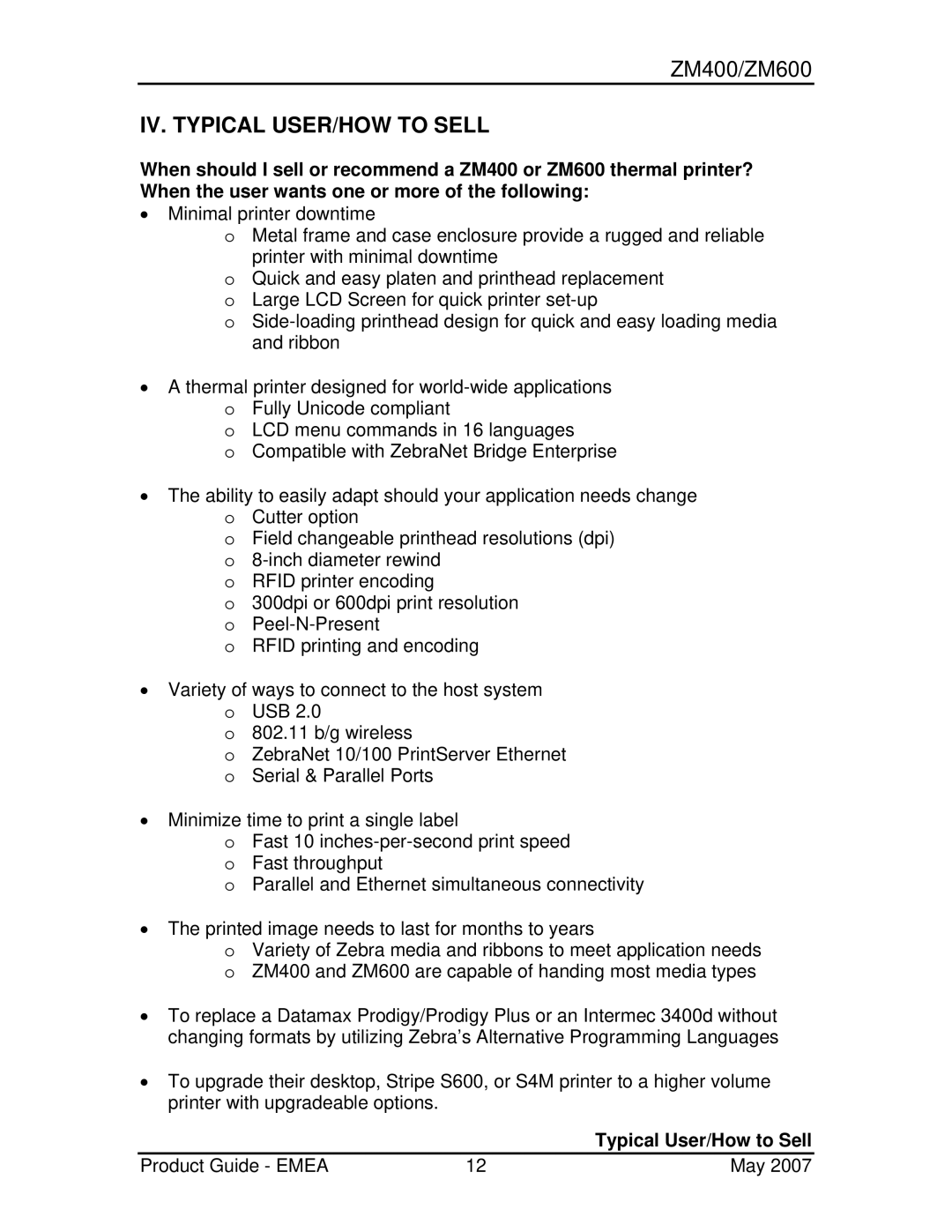ZM400/ZM600
IV. TYPICAL USER/HOW TO SELL
When should I sell or recommend a ZM400 or ZM600 thermal printer? When the user wants one or more of the following:
•Minimal printer downtime
oMetal frame and case enclosure provide a rugged and reliable
printer with minimal downtime
oQuick and easy platen and printhead replacement
oLarge LCD Screen for quick printer
o
•A thermal printer designed for
oFully Unicode compliant
oLCD menu commands in 16 languages
oCompatible with ZebraNet Bridge Enterprise
•The ability to easily adapt should your application needs change
oCutter option
oField changeable printhead resolutions (dpi)
o
oRFID printer encoding
o300dpi or 600dpi print resolution
o
oRFID printing and encoding
•Variety of ways to connect to the host system
oUSB 2.0
o802.11 b/g wireless
oZebraNet 10/100 PrintServer Ethernet
oSerial & Parallel Ports
•Minimize time to print a single label
oFast 10
oFast throughput
oParallel and Ethernet simultaneous connectivity
•The printed image needs to last for months to years
oVariety of Zebra media and ribbons to meet application needs
oZM400 and ZM600 are capable of handing most media types
•To replace a Datamax Prodigy/Prodigy Plus or an Intermec 3400d without changing formats by utilizing Zebra’s Alternative Programming Languages
•To upgrade their desktop, Stripe S600, or S4M printer to a higher volume printer with upgradeable options.
|
| Typical User/How to Sell |
Product Guide - EMEA | 12 | May 2007 |
